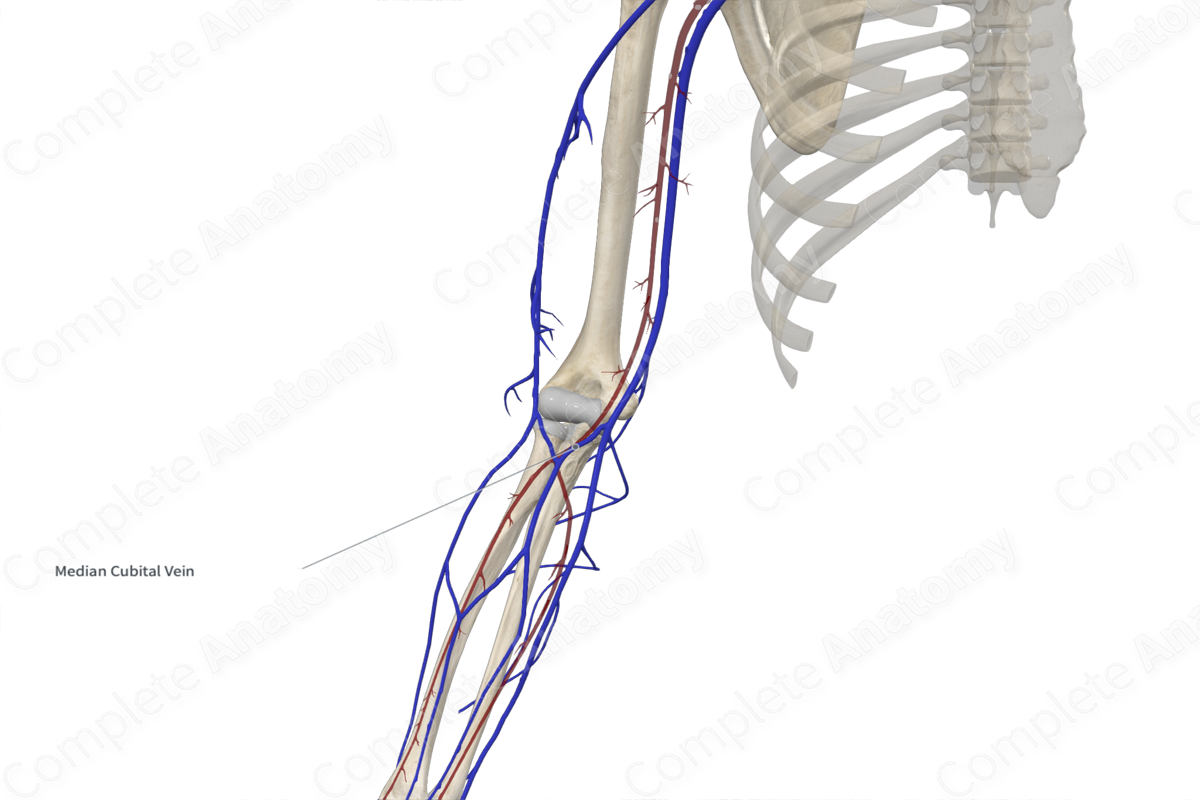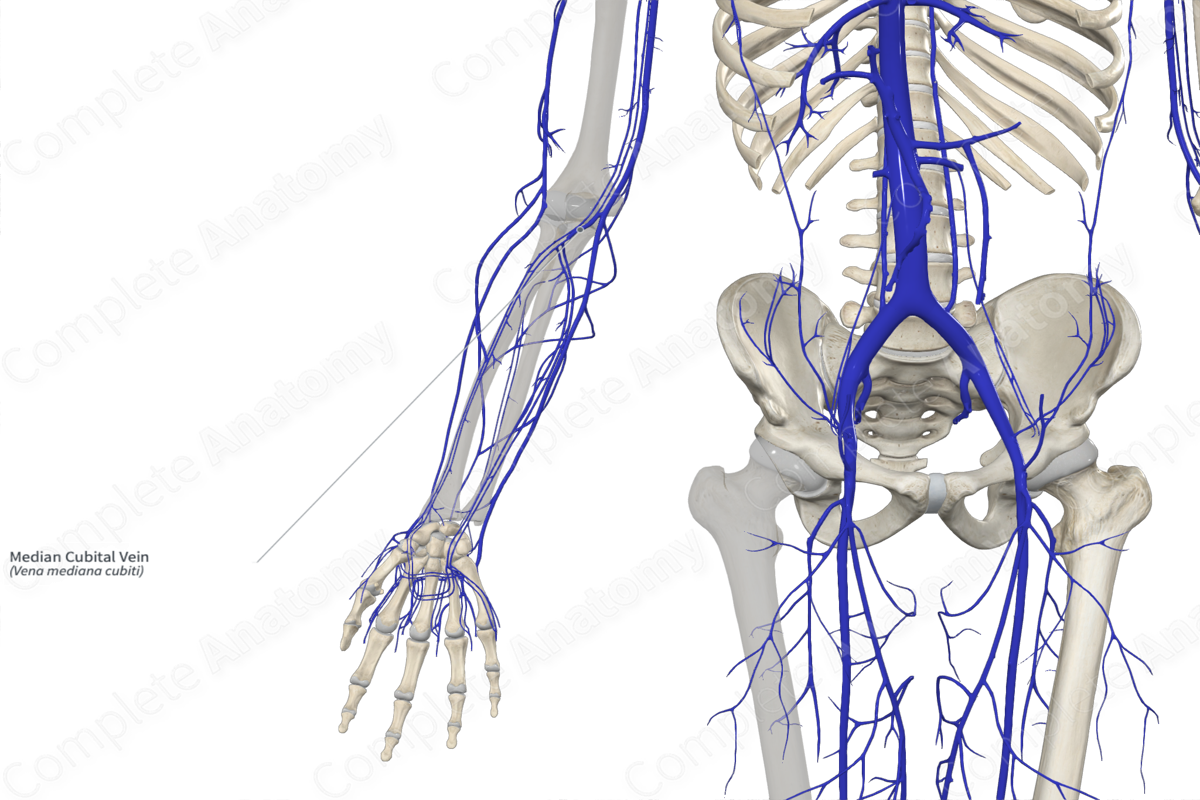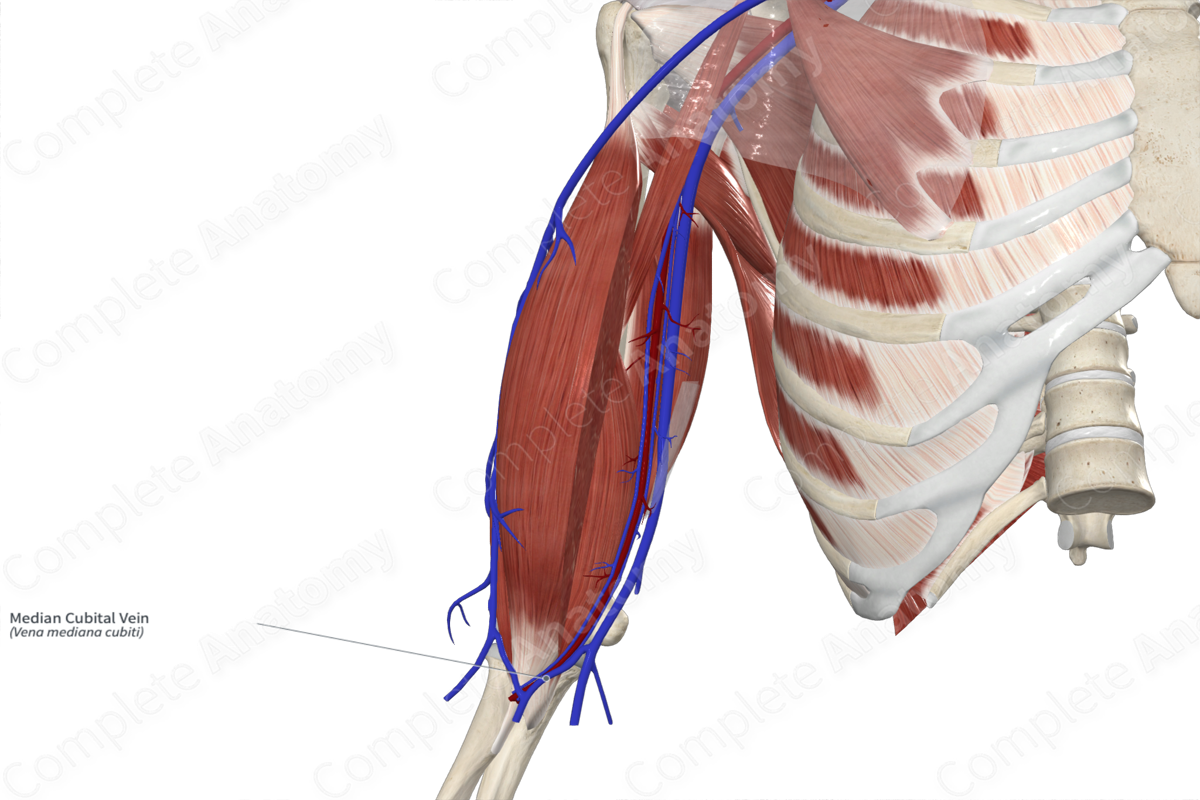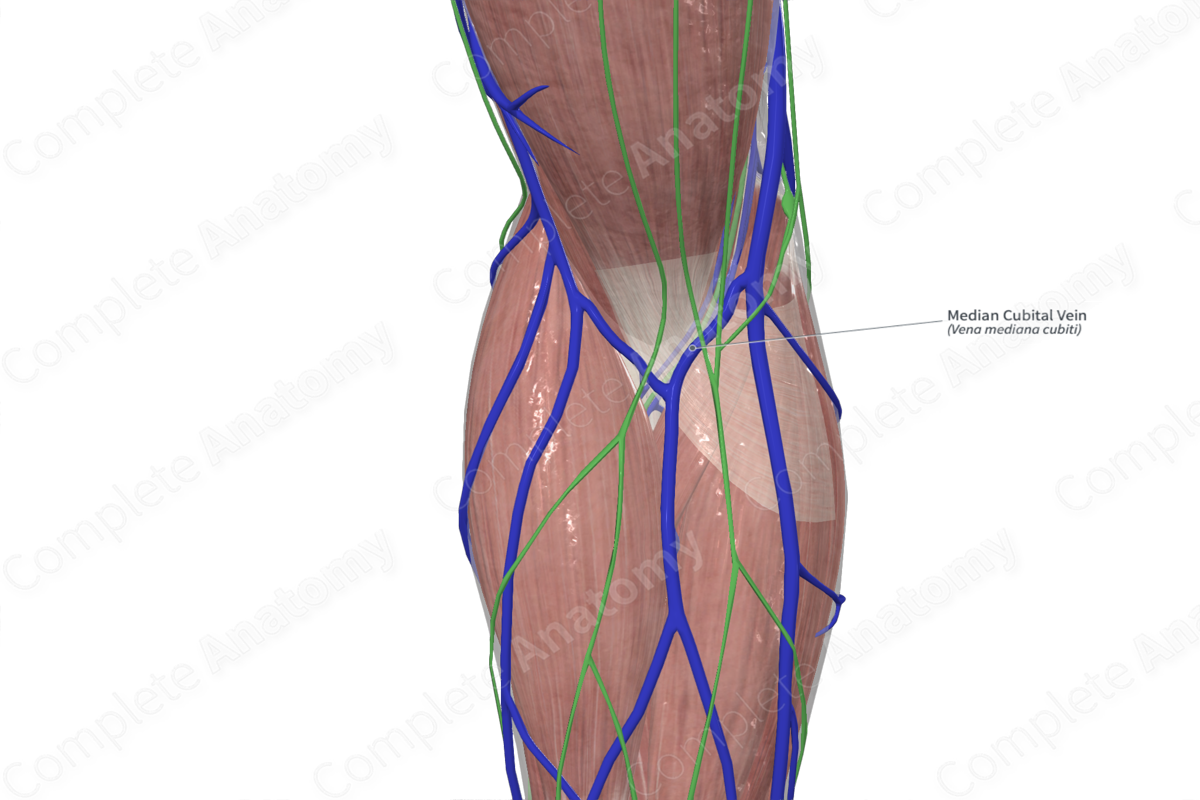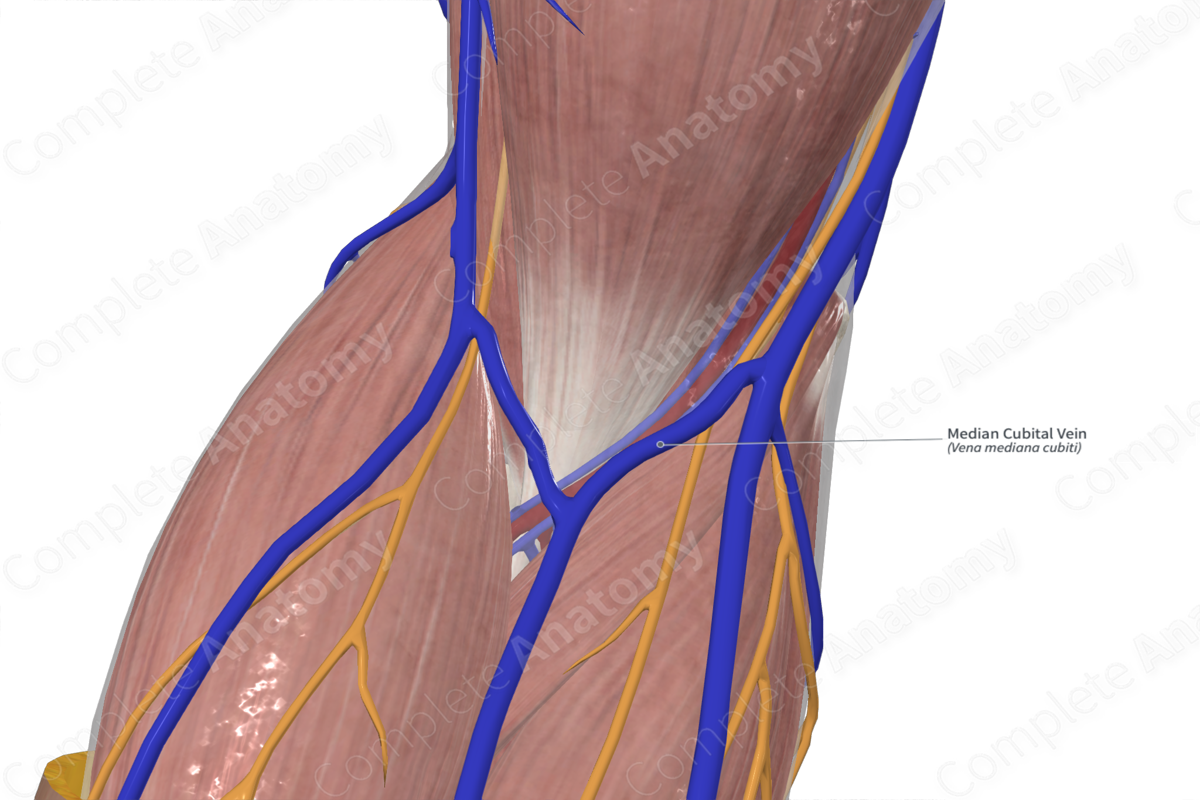
Quick Facts
Origin: Cephalic vein.
Course: Superomedially to basilic vein.
Tributaries: Branches from deep veins of the forearm.
Drainage: Collateral drainage of the forearm.
Origin
The median cubital vein originates from the cephalic vein within the forearm, 2.5 cm below the lateral epicondyle of the humerus (Standring, 2016).
Course
The median cubital vein courses in a superomedial direction, across the bicipital aponeurosis and joins the basilic vein.
Tributaries
The median cubital vein may receive the median antebrachial vein and tributaries from the deep median vein. If the median cubital vein is enlarged, the majority of the blood is transferred from the cephalic vein to basilic vein and the upper portion of the cephalic vein is reduced (Standring, 2016).
Structures Drained
The median cubital vein gives a collateral route for venous return in the forearm (Tubbs et al., 2016).
List of Clinical Correlates
- Venipuncture
References
Standring, S. (2016) Gray's Anatomy: The Anatomical Basis of Clinical Practice. Gray's Anatomy Series 41 edn.: Elsevier Limited.
Tubbs, R. S., Shoja, M. M. and Loukas, M. (2016) Bergman's Comprehensive Encyclopedia of Human Anatomic Variation. Wiley.

